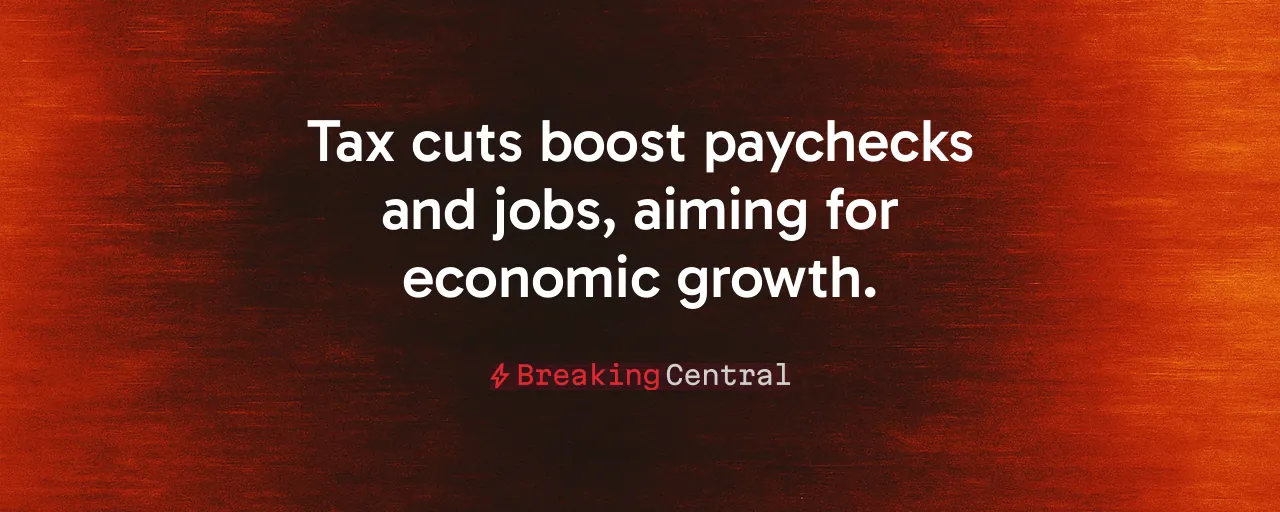A Bold Move for American Paychecks
House Republicans just passed a sweeping tax and spending package, championed by President Trump, that promises to reshape America’s economic landscape. The 940-page bill, officially named the One Big Beautiful Bill Act, extends the 2017 tax cuts, adds new deductions for tips and overtime, and boosts defense funding. California Governor Gavin Newsom called it a 'betrayal,' claiming it slashes vital programs. But for millions of working families, this could mean more money in their pockets.
The bill’s supporters argue it delivers immediate relief. By keeping the 2017 tax cuts permanent, it prevents a massive tax hike set to hit households next year. A family of four earning $75,000 could see an extra $2,900 annually, according to the Tax Foundation. New breaks for tipped workers, like waitresses and bartenders, and overtime pay for factory workers aim to reward hard work. For seniors, a temporary $6,000 deduction offers a lifeline on fixed incomes.
Yet the price tag is steep. The Joint Committee on Taxation estimates the bill adds $2.7 trillion to the federal debt over a decade. Critics warn it prioritizes the wealthy while gutting safety nets. So, what’s the real story? This plan bets on economic growth to offset costs, but its success hinges on execution and discipline.
Rewarding Work, Not Dependency
At the heart of the bill lies a push to reform welfare programs like Medicaid and SNAP. New work requirements aim to encourage self-reliance. Supporters say these rules restore dignity by tying benefits to effort. The Heritage Foundation projects that 80-hour work rules for Medicaid could save $930 billion over ten years, slowing the program’s unsustainable growth. For SNAP, similar measures aim to ensure aid reaches those truly in need.
Historical precedent backs this approach. The 1996 welfare reform, which introduced work requirements for cash assistance, led to higher employment and lower poverty rates for single mothers. Advocates argue that replicating this for Medicaid and SNAP could yield similar gains, especially in a strong job market. The bill also redirects funds from Planned Parenthood to community clinics, ensuring taxpayer dollars support broader health services.
Still, the transition won’t be seamless. Studies, like one from the Brookings Institution, show work requirements can lead to coverage losses, especially for those with unstable jobs. States like California, heavily reliant on Medicaid, face $28.4 billion in cuts, which could strain hospitals. The challenge is balancing fiscal restraint with compassion for the vulnerable.
Unleashing Energy and Security
The bill takes a hard stance on energy and security, repealing clean-energy tax credits and boosting defense and border funding. Supporters cheer the end of subsidies that distorted markets. By scrapping the Inflation Reduction Act’s green incentives, the plan aims to level the playing field for oil and gas, which still power most of America. The Tax Foundation estimates this could spur $440 billion in GDP growth by prioritizing efficient industries.
On security, the bill delivers. It funnels billions to Customs and Border Protection, addressing record migrant encounters reported in 2024. More agents and detention beds aim to restore order at the border. Defense contractors also gain, with funds restoring cuts from the sequestration era. These moves align with a core priority: protecting citizens from external threats.
Opponents, including Newsom, warn of job losses in California’s clean-energy sector, estimated at 686,000. They also decry cuts to law enforcement grants, like $545 million from the FBI, which could hamper crime-fighting. The trade-off is clear: prioritizing traditional energy and security over green initiatives and domestic programs.
The Debt Dilemma
The bill’s biggest gamble is its impact on the national debt, already at 108 percent of GDP. Adding $2.7 trillion over a decade raises red flags. Economists warn that without spending discipline, higher deficits could fuel inflation and interest rates, squeezing families. The bill’s offsets, like Medicaid and SNAP cuts, cover less than half the revenue loss, leaving future taxpayers on the hook.
Historical parallels loom large. The 1981 Kemp-Roth tax cuts sparked growth but also deficits, prompting later budget battles. The 2017 TCJA, while boosting investment, added to the debt when spending wasn’t reined in. Supporters insist this bill’s growth effects will outpace costs, but skepticism persists, even among libertarian Republicans wary of defense carve-outs.
A potential fix lies in compromise. Raising the top tax rate by two points could recoup revenue while preserving middle-class relief. Capping discretionary spending growth at 1 percent might also ease concerns. Without such measures, the bill risks burdening the next generation.
A Vision for Prosperity
This tax and spending package is a bold bet on American workers and economic strength. By cutting taxes, reforming welfare, and prioritizing security, it aims to unleash opportunity and protect the nation. The immediate benefits, like higher take-home pay and stronger borders, resonate with millions who value hard work and safety.
Yet the risks are real. Coverage losses, job shifts, and rising debt demand careful oversight. States like California will feel the pinch, and hospitals may struggle. The plan’s success depends on robust growth and disciplined spending, not just promises. Lawmakers must monitor impacts and adjust as needed to avoid unintended harm.
Ultimately, this bill reflects a choice: empower individuals through lower taxes and less dependency, or preserve expansive programs at the cost of fiscal health. For now, it’s a victory for those who believe in rewarding effort and securing the nation, but only time will tell if it delivers prosperity or debt.
